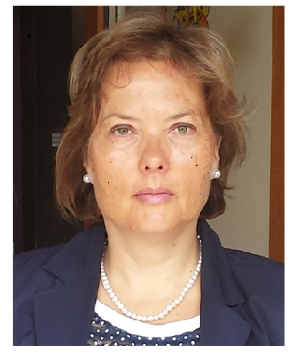Scientific Program
Keynote Session:
Title: Scale economies in extendedsnf storage
Biography:
G.S Rothwel is the Chief Consulting Economist for Turner, Harris, specializing in all aspects of the economics of nuclear power. G.S Rothwel has written extensively on energy economics and electricity markets. His book, “Economics of Nuclear Power,” was published by Rutledge in 2016.
Abstract:
Fuel is periodically replaced in nuclear power plants (NPPs). Irradiated or Spent Nuclear Fuel (SNF, where SNF could be used nuclear fuel if reprocessing facilities are available) cools in suitable facilities, where the type and the length of time depend on plans for the ultimate disposition of the SNF, for example, reprocessing or permanent long-term storage (“extended” implies storage longer than 50 years). The paper attempts to calculate the relationships between the costs and the sizes of on-site wet and on-site/off-site dry storage facilities. This is done by estimating reduced-form equations based on publicly available data, which can be modified with more recent, detailed, or proprietary data to update or extend the analysis: the values reported here should not be considered as the only possible outcomes; they are used here to understand relative NPP SNF owner economic incentives. The paper finds that once the NPP has been decommissioned, and only the on-site dry storage remains, there might not be a cost reason (from the point of view of the NPP owner/operator) to move the SNF to consolidated facilities. However, there is a consensus that consolidated facilities (a) would be more safe and secure than dispersed on-site storage locations, (b) would facilitate final disposal, and (c) can reduce the risks perceived by local communities near SNF storage facilities.
Title: Some preliminary thermal-hydraulic safety analysis on the NHR-200II reactor
Biography:
Yan Wang is working on Institute of Nuclear and New Energy Technology, China.
Abstract:
The NHR-200II as a new 200 MWth nuclear heating reactor, which adopts natural circulation reactor with high passive safety could serve as a safe and economic energy source for combined heat and power of city. The thermal-hydraulic transient response of reactor system during the postulated loss of coolant accident have a significant impact on the containment design and the evaluation on passive safety of reactor. In this research, based on the preliminary design of the NHR-200 II at the current stage, the sub-channel calculation of reactor core and the analysis on some typical loss of coolant accidents were carried on by using COBRA and PCNHR code which was a validated transient analysis programs developed by Tsinghua University. The calculation results show that the NHR-200II has enough safety margin during the normal operation. Under the postulated loss of coolant accident, the reactor core of the NHR-200 II is able to keep being coved by the residual coolant in the reactor pressure vessel during the transient and the relative safety parameters are effectively controlled under the design limitation values without special safety injection like general PWR, which indicates the good safety feature of the NHR-200 II design.
Title: Right of recourse under nuclear civil liability law of India
Biography:
Ramandeep Singh Sidhu has Joined Law College as Assistant Professor in January 2017 Working as Officiating Principal in the college since August2018.
Abstract:
The Civil Liability for Nuclear Damage Act, 2010 follows global practice in the field of nuclear civil liability and has a specific provision that enables a nuclear operator to exercise right of recourse against a supplier. The Civil Liability for Nuclear Damage Rules, 2011 provides explanation regarding the provisions enshrined in the Act. The Rules explains about the Supplier which has been formulated based on the industry practices of nuclear sector. The paper analyses the Civil Liability for Nuclear Damage Act and Rules on the issue of compatibility of right of recourse with the international nuclear civil liability principles and conventions, particularly with the Convention on Supplementary Compensation for Nuclear Damage, 1997. This paper also discusses the issue of right of recourse by nuclear operator against the supplier in the light of explanation about a supplier as provided under the Act and Rules.
Title: Nuclear plants as an option to help decarbonising the European and French heat sectors ? A techno-economic prospective analysis
Biography:
To be updated
Abstract:
The PhD Thesis studies the role that nuclear plants could play in decarbonizing the European and French heating sectors. These thermal plants could remain used in the long term due to their low carbon profile and ability to provide flexibility to the power grid. The most widely spread operation of nuclear plants however implies the rejection into the environment of the heat that cannot be converted to electricity. Transferring part of this heat to nearby industrial sinks or district heating systems would reduce fossil fuel consumption and greenhouse gases (GHG) emissions. If replacing imported fossil-fuels, it would also improve energy self-sufficiency, favouring long-term price stability. Five Parts are composing the PhD Report. It starts with the Introduction (Part I) and ends with the Conclusions (Part V). Parts II, III and IV constitute the hearth of the Report. Part II evaluates the costs and benefits of diverse heat decarbonisation alternatives. Potentially cost-effective nuclear plant based heating systems are identified. At least seven out of the fifteen theoretical systems envisioned in Europe could prove to be overall good to the society. They represent a good compromise between the diverse socioeconomic criterions affecting decision-making processes, such as costs, greenhouse gases and air pollutant emissions, land use planning, energy self-sufficiency or price stability. The uncertainty is however important, especially regarding transportation and distribution costs. While the expected increase of carbon and fossil fuels prices would favour the development of low carbon heating systems, the economic and environmental balance remains to be evaluated on a case by case basis using advanced engineering softwares. Part II is decomposed into three Chapters: 1. Cost-Benefit Analysis of district heating (DH) using heat from nuclear plants in Europe; 2. Nuclear plant based DH systems are compared to other heat decarbonization options in Dunkirk; 3. Spatial analysis of feasible industrial symbiosis based on nuclear plant sourced steam in France. Part III analyses multi-stakeholder interactions in real world projects. Challenges to concrete implementation are high, arising from social, political, institutional, financial and psychological dimensions. If nuclear plants are planned on a site that holds potential for cost-effective heat supply (e.g. Gravelines, Le Bugey, Loviisa, Oldbury), they should be built as ‘cogeneration ready’. Cogeneration readiness can be delivered for a small incremental cost, and would ensure that the plants are ready for a complete cogeneration upgrade when the market, institutional and socio-political conditions are fulfilled. Alongside, the development of district heating networks and the co-location of diverse industrial factories within contiguous areas should be strongly supported through all channels, especially local ones. Part III is broken down into two Chapters: 4. Single case study of the Loviisa 3 project in Finland, offered by Fortum in 2009; 5. Multicriteria approach to help integrating viewpoints of various actors in a French urban area. Part IV investigates the French case in details through prospective and multi-level perspective approaches. Nuclear plant based heating systems could be progressively implemented between 2020 and 2050 without jeopardizing the development of renewable heat and power sources or other excess heat sources. Towards 2050, cost-effective supply of heat from French nuclear plants to DH systems and industrial sinks could total 20-180 TWth/a (10-60 TWth/a and 10-120 TWth/a, respectively) representing a reduction of 2-18% of the total French GHG emissions compare to 2014 levels (0.5-4% and 3.5-14%, respectively). Such systems are however barely mentioned in international and national energy scenario. While awareness, legitimacy and desirability can be stimulated by active and crossboundary intermediation, external and unpredictable events also hold a significant role. A prerequisite to an efficient intermediation is to acknowledge the fact that legitimacy is based not on the knowledge itself but on the working conditions surrounding knowledge creation. Part IV is split into two Chapters: 6. Prospective analysis in France towards 2050; 7. Open and active intermediation to enhance project experimentation in France.
Title: Inherent safety and ATWS analysis of High Temperature Gas-cooled Reactor
Biography:
Yanhua Zheng has her expertise in nuclear reactor thermal-hydraulic design and accident analysis. She is responsible for the thermal-hydraulic design and accident analysis of the Chinese 200 MWe HTR-PM project. She has comprehensive and in-depth study on typical accidents and key phenomena of the pebble-bed HTGR, especially on the water-ingress accident, air-ingress accident, uncertainty analysis and so on. Her research covers the software development and V&V, accident management procedure development, and BDBA mitigation method design of HTGR. She is also the leading researcher or main participant of several National Science & Technology Major Projects and National Natural Science Foundation Projects of China.
Abstract:
The modular high temperature gas-cooled reactor (HTGR), recognized as a candidate for the Generation IV nuclear energy system technology, has well-known inherent safety features. A commercial-scale 200 MWe Pebble-bed Modular High Temperature gas-cooled Reactor (HTR-PM) has been designed and constructed in Shandong Province, China. Most of the construction and installation work have been finished and the connection to the electric grid will be expected in 2019 or the first half of 2020.In this paper, the design and the inherent safety feature of the HTR-PM has been introduced. Several Anticipated Transient Without Scram (ATWS) accidents, a type of Beyond Design Basis Accident (BDBA) receiving high attention especially in Pressurized Water Reactor (PWR) analysis, have been studied, including the reactivity introduction ATWS, loss of off-site power ATWS, depressurized loss of coolant ATWS.Calculation results prove that, even in such kind of BDBAs with very low probability, the inherent safety design of HTR-PM can guarantee the reactor shut-down itself by negative temperature feedback. During the accidents, the decay heat of the reactor can be transferred to the environment safely by heat conduction, natural convection and radiation, and the fuel temperature and the reactor pressure vessel (RPV) temperature would never exceed the limitation. The large release of the fission products would not happen.
Title: Zr alloy protection against high-temperature oxidation: double-layered coating with active and passive functional properties
Biography:
Irena Kratochvilova obtained very important results which were published in prestigious journals and were cited by scientific community. She has published 85 papers in impacted journals. She has been working in the Institute of Physics AS CR and teaching at the Faculty of Nuclear Engineering Czech Technical University.
Abstract:
In this work we investigated the hot steam oxidation of ZIRLO fuel cladding coated with a double layer consisting of 500 nm nanocrystalline diamond (NCD) as the bottom layer and 2 mm chromium-aluminum-silicon nitride (CrAlSiN) as the upper layer. Coated and noncoated ZIRLO samples were exposed for 4 days at 400 °C in an autoclave (working water-cooled nuclear reactor temperature) and for 60 minutes at 1000 °C (nuclear reactor accident temperature) in a hot steam furnace. We have shown that the NCD coating protects the Zr alloy surface against oxidation in an active way: carbon from NCD layer enters the Zr alloy surface and, by changing the physical and chemical properties of the Zr cladding tube surface, limits the Zr oxidation process. In contrast, the passive CrAlSiN coating prevents the Zr cladding tube surface from coming into physical contact with the hot steam. The advantages of the double layer were demonstrated, particularly in terms of hot (accident-temperature) oxidation kinetics: in the initial stage, CrAlSiN acts as an impermeable barrier, but after a longer time, the protection by CrAlSiN decreases as an increasing number of cracks in the carbon of NCD penetrate the Zr cladding surface and worsen conditions for Zr oxidation. For the double-layer coating, the underlying NCD layer mitigates thermal expansion, reducing cracks and defects in upper layer CrAlSiN.
Title: Lessons learned during the partial decommissioning process of Research Reactor in Sofia, Bulgaria
Biography:
Aleksandar Mladenov has his expertise in radiation protection, environmental and technological radiation control of nuclear reactors, management of radioactive waste, evaluation of radioactive discharges from nuclear facilities and estimation of doses for personnel and the population. As a Head of Radiation Protection Department of the Institute for Nuclear Research and Nuclear Energy of Bulgarian Academy of Sciences, his work is related also to the training of students and workers in the field of nuclear industry.
Abstract:
The present work aims to give a clear idea of the progress lessons learned during partial decommissioning of the IRT-2000 research reactor, which is located of the capital of Bulgaria, Sofia town. The IRT-2000 Research Reactor was designed and built in compliance with the widely adopted norms and standards in force in the fifties in the former USSR, and was put in operation in 1961. The Bulgarian Nuclear Safety Authority and Institute for Nuclear Research and Nuclear Energy (INRNE) proposed a program containing alternatives for the future development of the IRT-2000 Research Reactor. Upon detailed consideration of this document by a number of authorities, the Council of Ministers issued Resolution No. 332/17.05.1999 on starting a large-scale program. As a result, subsequent Resolution No. 552/06.07.2001 was passed enacting the reconstruction the IRT-2000 Research Reactor into a low power reactor up to 200 kW. Described is a cycle of activities beginning with the preparation of the necessary decommissioning documents (Safety Analysis report for dismantling activities, Environmental Impact Assessment Report, Detailed Plan included Radioactive Waste Management and personnel doses etc.), classification of areas, comparison for preliminary estimation and obtained doses, description of expected radionuclides and comparison between gained and planned radioactive waste. All activities that precede the decommissioning process include selecting a container for transporting of spent nuclear fuel, site preparation, bridge crane replacement, radiation system replacement, preliminary analyzes and calculations. A series of photos shows the initial state of the research reactor and its current state now. Now the nuclear research reactor is in extended shutdown position.
Title: Nuclear Energy: Building or Burning the Bridges of Future Energy Landscape of India
Biography:
Archana Choubey is presently working as an Independent Researcher in Bengaluru. Previously, she was working as an Associate Fellow with the Center for Human Security Studies (CHSS), Hyderabad. She is also a Doctoral candidate at Jawaharlal Nehru University (JNU). She has completed her M.Phil and MA from JNU. Before joining CHSS, she has also worked with some of the most renowned think tanks of India like Institute for Defence Studies and Analyses (IDSA); The United Service Institution of India (USI) and Centre for Air Power Studies (CAPS). She has also worked with one of the most eminent newspaper of India, The Hindu. She has presented papers in various national and international seminars. She has published her papers in peer reviewed journals of national and international repute.
Abstract:
Emergent fretfulness about energy security and climate change, attached with greater than ever demand for electricity worldwide, have encouraged many countries to explore the feasibility of nuclear energy. Existing nuclear states are already building nuclear reactors while some non-nuclear states are actively studying the possibility of joining the nuclear grid. There are more than 400 nuclear power plants at present operating in 31 countries around the world and approximately 13-14 percent of world’s electricity comes from nuclear power. India is the fourth largest consumer of energy only after the US, China and Russia and is the second most populous country in the world with PPP only second in the world. India has a thriving and predominantly indigenous nuclear power program and aspires to supply 25% of electricity from nuclear power by 2050. The interest in nuclear energy was glistened by rising energy demands in the emerging market of the developing nations as well as the need to reduce use of fossil fuels as a rejoinder to climate change, making nuclear more fascinating though less competitive than other types of power. But the 2011 Fukushima incident has led to fresh analysis of plant safety regulations and emergency measures, and to inquire about reactor design and how to deal with spent nuclear fuel. India is now switching to nuclear energy as it is attributed of being one of the most unpolluted, carbon-free and sustainable energy source and endows with a green alternative to dirty, climate-killing coal. Nonetheless, the development of nuclear energy for peaceful applications such as nuclear power plants presented a plethora of scientific, technical, and economic issues. Nuclear plants are extremely costly to build, generate dangerous radioactive waste and present a striking target for terrorism. However, other sources of renewable energy are effortlessly available, cost-effective and produce no lethal waste, for which there still is no permanent storage option. Amongst the auxiliary constraints on the advance of nuclear energy most frequently quoted are concerns about the safety and security of nuclear facilities and materials, and the plausibility for nuclear energy programs to advance the proliferation of nuclear weapons. Most of the nuclear power plants are either dated or based on cold war-era technology, in short they are in vulnerable state as far as safety is concerned; have intractable waste management issues; appalling regulatory challenges and an unstable neighbourhood which accelerates geopolitical concerns. This paper will address the security concerns associated with an expansion of nuclear power in India. The paper would further discuss if nuclear energy is indeed going to be the future for India?
Title: Investigate the possibility of burning weapon-grade plutonium using a new design of VVER-1200
Biography:
To be updated
Abstract:
This paper aims to reach the most optimizing design of the VVER-1200 assembly for achieving large consuming of weapons-grade plutonium (wgPu). This work introduces a significant change in the geometric shape of the fuel rods without introducing change into the fuel assembly’s dimensions. Five pitches are suggested to consume wgPu. The neutronic characteristics of the five pitches have been investigated using MCNPX code version 2.7. The radial power distributions through the five examined pitches are analyzed. The radial power distribution changes from pitch to other depending on the arrangement and the quantity of wgPu in the assembly. The infinity multiplication factor (Kinf) has been calculated for the five examined pitches. Using of Th-wgPu as a fuel in the VVER-1200 assemblies increases the nuclear fuel life cycle. The FIR for the five suggested pitches has been analyzed. The most important safety parameters such as the effective delayed neutrons (βeff), the control rod worth (CRW), the fuel temperature coefficient (FTC) and moderator temperature coefficient (MTC) were calculated for each pitch to identify the most safety pitch. It is found that the distribution and the arrangement of the seed rod have a great effect on these parameters. The effect of Boron insertion in the moderator was analyzed at different boron concentration.
Title: Thermal Hydraulic Analysis of Supercritical Water Reactor Cooled By Al2O3 Nanofluid
Biography:
Adel Alyan has completed his Ph.D from Cairo University. He is head of heat transfer lab. At Nuclear Research Center, Atomic Energy Authority, Cairo, Egypt. He has published more than 15 papers, the most of it devoted on nuclear reactors.
Abstract:
The aim of this study was to perform a thermal–hydraulic analysis of SCWR cooled by nanofluids at various volume fractions (2%, 6% and 10%) of Al2O3 nanofluid. The temperature distribution of fuel, cladding surface and coolant in axial direction are investigated. The achieved results show that density, viscosity, thermal conductivity of the coolant increases with the increase of Nano particles volume fraction. Contrasting to specific heat, which decreases with the increase in nano particles volume fraction. For 10% volume percentage of nanoparticles the coolant temperature difference with pure water is about 24.2 °C , 62.5 °C and 94°C at constant pressure 25, 30, and 35 (MPa) respectivly. Using nanofluids with 10% volume percentage of nanoparticles as coolant has significant effect on fuel temperature that the maximum fuel temperature reduced by 26.5%, 25% and 21% at constant pressure 25, 30, and 35 (MPa) respectivly.
Oral Session 1:
- Nuclear Reactions | Nuclear Reactor | Nuclear Materials | Nuclear Fuel
Title: Right of recourse under nuclear civil liability law of India
Biography:
Ramandeep Singh Sidhu has Joined Law College as Assistant Professor in January 2017 Working as Officiating Principal in the college since August2018.
Abstract:
The Civil Liability for Nuclear Damage Act, 2010 follows global practice in the field of nuclear civil liability and has a specific provision that enables a nuclear operator to exercise right of recourse against a supplier. The Civil Liability for Nuclear Damage Rules, 2011 provides explanation regarding the provisions enshrined in the Act. The Rules explains about the Supplier which has been formulated based on the industry practices of nuclear sector. The paper analyses the Civil Liability for Nuclear Damage Act and Rules on the issue of compatibility of right of recourse with the international nuclear civil liability principles and conventions, particularly with the Convention on Supplementary Compensation for Nuclear Damage, 1997. This paper also discusses the issue of right of recourse by nuclear operator against the supplier in the light of explanation about a supplier as provided under the Act and Rules.
Title: Nuclear plants as an option to help decarbonising the European and French heat sectors ? A techno-economic prospective analysis
Biography:
To be updated
Abstract:
The PhD Thesis studies the role that nuclear plants could play in decarbonizing the European and French heating sectors. These thermal plants could remain used in the long term due to their low carbon profile and ability to provide flexibility to the power grid. The most widely spread operation of nuclear plants however implies the rejection into the environment of the heat that cannot be converted to electricity. Transferring part of this heat to nearby industrial sinks or district heating systems would reduce fossil fuel consumption and greenhouse gases (GHG) emissions. If replacing imported fossil-fuels, it would also improve energy self-sufficiency, favouring long-term price stability. Five Parts are composing the PhD Report. It starts with the Introduction (Part I) and ends with the Conclusions (Part V). Parts II, III and IV constitute the hearth of the Report. Part II evaluates the costs and benefits of diverse heat decarbonisation alternatives. Potentially cost-effective nuclear plant based heating systems are identified. At least seven out of the fifteen theoretical systems envisioned in Europe could prove to be overall good to the society. They represent a good compromise between the diverse socioeconomic criterions affecting decision-making processes, such as costs, greenhouse gases and air pollutant emissions, land use planning, energy self-sufficiency or price stability. The uncertainty is however important, especially regarding transportation and distribution costs. While the expected increase of carbon and fossil fuels prices would favour the development of low carbon heating systems, the economic and environmental balance remains to be evaluated on a case by case basis using advanced engineering softwares. Part II is decomposed into three Chapters: 1. Cost-Benefit Analysis of district heating (DH) using heat from nuclear plants in Europe; 2. Nuclear plant based DH systems are compared to other heat decarbonization options in Dunkirk; 3. Spatial analysis of feasible industrial symbiosis based on nuclear plant sourced steam in France. Part III analyses multi-stakeholder interactions in real world projects. Challenges to concrete implementation are high, arising from social, political, institutional, financial and psychological dimensions. If nuclear plants are planned on a site that holds potential for cost-effective heat supply (e.g. Gravelines, Le Bugey, Loviisa, Oldbury), they should be built as ‘cogeneration ready’. Cogeneration readiness can be delivered for a small incremental cost, and would ensure that the plants are ready for a complete cogeneration upgrade when the market, institutional and socio-political conditions are fulfilled. Alongside, the development of district heating networks and the co-location of diverse industrial factories within contiguous areas should be strongly supported through all channels, especially local ones. Part III is broken down into two Chapters: 4. Single case study of the Loviisa 3 project in Finland, offered by Fortum in 2009; 5. Multicriteria approach to help integrating viewpoints of various actors in a French urban area. Part IV investigates the French case in details through prospective and multi-level perspective approaches. Nuclear plant based heating systems could be progressively implemented between 2020 and 2050 without jeopardizing the development of renewable heat and power sources or other excess heat sources. Towards 2050, cost-effective supply of heat from French nuclear plants to DH systems and industrial sinks could total 20-180 TWth/a (10-60 TWth/a and 10-120 TWth/a, respectively) representing a reduction of 2-18% of the total French GHG emissions compare to 2014 levels (0.5-4% and 3.5-14%, respectively). Such systems are however barely mentioned in international and national energy scenario. While awareness, legitimacy and desirability can be stimulated by active and crossboundary intermediation, external and unpredictable events also hold a significant role. A prerequisite to an efficient intermediation is to acknowledge the fact that legitimacy is based not on the knowledge itself but on the working conditions surrounding knowledge creation. Part IV is split into two Chapters: 6. Prospective analysis in France towards 2050; 7. Open and active intermediation to enhance project experimentation in France.
Title: Inherent safety and ATWS analysis of High Temperature Gas-cooled Reactor
Biography:
Yanhua Zheng has her expertise in nuclear reactor thermal-hydraulic design and accident analysis. She is responsible for the thermal-hydraulic design and accident analysis of the Chinese 200 MWe HTR-PM project. She has comprehensive and in-depth study on typical accidents and key phenomena of the pebble-bed HTGR, especially on the water-ingress accident, air-ingress accident, uncertainty analysis and so on. Her research covers the software development and V&V, accident management procedure development, and BDBA mitigation method design of HTGR. She is also the leading researcher or main participant of several National Science & Technology Major Projects and National Natural Science Foundation Projects of China.
Abstract:
The modular high temperature gas-cooled reactor (HTGR), recognized as a candidate for the Generation IV nuclear energy system technology, has well-known inherent safety features. A commercial-scale 200 MWe Pebble-bed Modular High Temperature gas-cooled Reactor (HTR-PM) has been designed and constructed in Shandong Province, China. Most of the construction and installation work have been finished and the connection to the electric grid will be expected in 2019 or the first half of 2020.In this paper, the design and the inherent safety feature of the HTR-PM has been introduced. Several Anticipated Transient Without Scram (ATWS) accidents, a type of Beyond Design Basis Accident (BDBA) receiving high attention especially in Pressurized Water Reactor (PWR) analysis, have been studied, including the reactivity introduction ATWS, loss of off-site power ATWS, depressurized loss of coolant ATWS.Calculation results prove that, even in such kind of BDBAs with very low probability, the inherent safety design of HTR-PM can guarantee the reactor shut-down itself by negative temperature feedback. During the accidents, the decay heat of the reactor can be transferred to the environment safely by heat conduction, natural convection and radiation, and the fuel temperature and the reactor pressure vessel (RPV) temperature would never exceed the limitation. The large release of the fission products would not happen.
Title: Zr alloy protection against high-temperature oxidation: double-layered coating with active and passive functional properties
Biography:
Irena Kratochvilova obtained very important results which were published in prestigious journals and were cited by scientific community. She has published 85 papers in impacted journals. She has been working in the Institute of Physics AS CR and teaching at the Faculty of Nuclear Engineering Czech Technical University.
Abstract:
In this work we investigated the hot steam oxidation of ZIRLO fuel cladding coated with a double layer consisting of 500 nm nanocrystalline diamond (NCD) as the bottom layer and 2 mm chromium-aluminum-silicon nitride (CrAlSiN) as the upper layer. Coated and noncoated ZIRLO samples were exposed for 4 days at 400 °C in an autoclave (working water-cooled nuclear reactor temperature) and for 60 minutes at 1000 °C (nuclear reactor accident temperature) in a hot steam furnace. We have shown that the NCD coating protects the Zr alloy surface against oxidation in an active way: carbon from NCD layer enters the Zr alloy surface and, by changing the physical and chemical properties of the Zr cladding tube surface, limits the Zr oxidation process. In contrast, the passive CrAlSiN coating prevents the Zr cladding tube surface from coming into physical contact with the hot steam. The advantages of the double layer were demonstrated, particularly in terms of hot (accident-temperature) oxidation kinetics: in the initial stage, CrAlSiN acts as an impermeable barrier, but after a longer time, the protection by CrAlSiN decreases as an increasing number of cracks in the carbon of NCD penetrate the Zr cladding surface and worsen conditions for Zr oxidation. For the double-layer coating, the underlying NCD layer mitigates thermal expansion, reducing cracks and defects in upper layer CrAlSiN.
Title: Lessons learned during the partial decommissioning process of Research Reactor in Sofia, Bulgaria
Biography:
Aleksandar Mladenov has his expertise in radiation protection, environmental and technological radiation control of nuclear reactors, management of radioactive waste, evaluation of radioactive discharges from nuclear facilities and estimation of doses for personnel and the population. As a Head of Radiation Protection Department of the Institute for Nuclear Research and Nuclear Energy of Bulgarian Academy of Sciences, his work is related also to the training of students and workers in the field of nuclear industry.
Abstract:
The present work aims to give a clear idea of the progress lessons learned during partial decommissioning of the IRT-2000 research reactor, which is located of the capital of Bulgaria, Sofia town. The IRT-2000 Research Reactor was designed and built in compliance with the widely adopted norms and standards in force in the fifties in the former USSR, and was put in operation in 1961. The Bulgarian Nuclear Safety Authority and Institute for Nuclear Research and Nuclear Energy (INRNE) proposed a program containing alternatives for the future development of the IRT-2000 Research Reactor. Upon detailed consideration of this document by a number of authorities, the Council of Ministers issued Resolution No. 332/17.05.1999 on starting a large-scale program. As a result, subsequent Resolution No. 552/06.07.2001 was passed enacting the reconstruction the IRT-2000 Research Reactor into a low power reactor up to 200 kW. Described is a cycle of activities beginning with the preparation of the necessary decommissioning documents (Safety Analysis report for dismantling activities, Environmental Impact Assessment Report, Detailed Plan included Radioactive Waste Management and personnel doses etc.), classification of areas, comparison for preliminary estimation and obtained doses, description of expected radionuclides and comparison between gained and planned radioactive waste. All activities that precede the decommissioning process include selecting a container for transporting of spent nuclear fuel, site preparation, bridge crane replacement, radiation system replacement, preliminary analyzes and calculations. A series of photos shows the initial state of the research reactor and its current state now. Now the nuclear research reactor is in extended shutdown position.
Title: Nuclear Energy: Building or Burning the Bridges of Future Energy Landscape of India
Biography:
Archana Choubey is presently working as an Independent Researcher in Bengaluru. Previously, she was working as an Associate Fellow with the Center for Human Security Studies (CHSS), Hyderabad. She is also a Doctoral candidate at Jawaharlal Nehru University (JNU). She has completed her M.Phil and MA from JNU. Before joining CHSS, she has also worked with some of the most renowned think tanks of India like Institute for Defence Studies and Analyses (IDSA); The United Service Institution of India (USI) and Centre for Air Power Studies (CAPS). She has also worked with one of the most eminent newspaper of India, The Hindu. She has presented papers in various national and international seminars. She has published her papers in peer reviewed journals of national and international repute.
Abstract:
Emergent fretfulness about energy security and climate change, attached with greater than ever demand for electricity worldwide, have encouraged many countries to explore the feasibility of nuclear energy. Existing nuclear states are already building nuclear reactors while some non-nuclear states are actively studying the possibility of joining the nuclear grid. There are more than 400 nuclear power plants at present operating in 31 countries around the world and approximately 13-14 percent of world’s electricity comes from nuclear power. India is the fourth largest consumer of energy only after the US, China and Russia and is the second most populous country in the world with PPP only second in the world. India has a thriving and predominantly indigenous nuclear power program and aspires to supply 25% of electricity from nuclear power by 2050. The interest in nuclear energy was glistened by rising energy demands in the emerging market of the developing nations as well as the need to reduce use of fossil fuels as a rejoinder to climate change, making nuclear more fascinating though less competitive than other types of power. But the 2011 Fukushima incident has led to fresh analysis of plant safety regulations and emergency measures, and to inquire about reactor design and how to deal with spent nuclear fuel. India is now switching to nuclear energy as it is attributed of being one of the most unpolluted, carbon-free and sustainable energy source and endows with a green alternative to dirty, climate-killing coal. Nonetheless, the development of nuclear energy for peaceful applications such as nuclear power plants presented a plethora of scientific, technical, and economic issues. Nuclear plants are extremely costly to build, generate dangerous radioactive waste and present a striking target for terrorism. However, other sources of renewable energy are effortlessly available, cost-effective and produce no lethal waste, for which there still is no permanent storage option. Amongst the auxiliary constraints on the advance of nuclear energy most frequently quoted are concerns about the safety and security of nuclear facilities and materials, and the plausibility for nuclear energy programs to advance the proliferation of nuclear weapons. Most of the nuclear power plants are either dated or based on cold war-era technology, in short they are in vulnerable state as far as safety is concerned; have intractable waste management issues; appalling regulatory challenges and an unstable neighbourhood which accelerates geopolitical concerns. This paper will address the security concerns associated with an expansion of nuclear power in India. The paper would further discuss if nuclear energy is indeed going to be the future for India?
Title: Investigate the possibility of burning weapon-grade plutonium using a new design of VVER-1200
Biography:
To be updated
Abstract:
This paper aims to reach the most optimizing design of the VVER-1200 assembly for achieving large consuming of weapons-grade plutonium (wgPu). This work introduces a significant change in the geometric shape of the fuel rods without introducing change into the fuel assembly’s dimensions. Five pitches are suggested to consume wgPu. The neutronic characteristics of the five pitches have been investigated using MCNPX code version 2.7. The radial power distributions through the five examined pitches are analyzed. The radial power distribution changes from pitch to other depending on the arrangement and the quantity of wgPu in the assembly. The infinity multiplication factor (Kinf) has been calculated for the five examined pitches. Using of Th-wgPu as a fuel in the VVER-1200 assemblies increases the nuclear fuel life cycle. The FIR for the five suggested pitches has been analyzed. The most important safety parameters such as the effective delayed neutrons (βeff), the control rod worth (CRW), the fuel temperature coefficient (FTC) and moderator temperature coefficient (MTC) were calculated for each pitch to identify the most safety pitch. It is found that the distribution and the arrangement of the seed rod have a great effect on these parameters. The effect of Boron insertion in the moderator was analyzed at different boron concentration.
Title: Thermal hydraulic analysis of supercritical water reactor cooled by Al2O3 nanoflui
Biography:
Adel Alyan has completed his Ph.D from Cairo University. He is head of heat transfer lab. At Nuclear Research Center, Atomic Energy Authority, Cairo, Egypt. He has published more than 15 papers, the most of it devoted on nuclear reactors.
Abstract:
The aim of this study was to perform a thermal–hydraulic analysis of SCWR cooled by nanofluids at various volume fractions (2%, 6% and 10%) of Al2O3 nanofluid. The temperature distribution of fuel, cladding surface and coolant in axial direction are investigated. The achieved results show that density, viscosity, thermal conductivity of the coolant increases with the increase of Nano particles volume fraction. Contrasting to specific heat, which decreases with the increase in nano particles volume fraction. For 10% volume percentage of nanoparticles the coolant temperature difference with pure water is about 24.2 °C , 62.5 °C and 94°C at constant pressure 25, 30, and 35 (MPa) respectivly. Using nanofluids with 10% volume percentage of nanoparticles as coolant has significant effect on fuel temperature that the maximum fuel temperature reduced by 26.5%, 25% and 21% at constant pressure 25, 30, and 35 (MPa) respectivly.
Title: Investigate the possibility of burning weapon-grade plutonium using a new design of VVER-1200
Biography:
To be updated
Abstract:
This paper aims to reach the most optimizing design of the VVER-1200 assembly for achieving large consuming of weapons-grade plutonium (wgPu). This work introduces a significant change in the geometric shape of the fuel rods without introducing change into the fuel assembly’s dimensions. Five pitches are suggested to consume wgPu. The neutronic characteristics of the five pitches have been investigated using MCNPX code version 2.7. The radial power distributions through the five examined pitches are analyzed. The radial power distribution changes from pitch to other depending on the arrangement and the quantity of wgPu in the assembly. The infinity multiplication factor (Kinf) has been calculated for the five examined pitches. Using of Th-wgPu as a fuel in the VVER-1200 assemblies increases the nuclear fuel life cycle. The FIR for the five suggested pitches has been analyzed. The most important safety parameters such as the effective delayed neutrons (βeff), the control rod worth (CRW), the fuel temperature coefficient (FTC) and moderator temperature coefficient (MTC) were calculated for each pitch to identify the most safety pitch. It is found that the distribution and the arrangement of the seed rod have a great effect on these parameters. The effect of Boron insertion in the moderator was analyzed at different boron concentration.




















